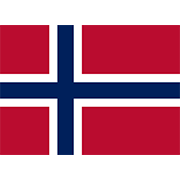Fiscal subject related
Here are some of the main things you should know about the retail operating hours in Norway:
- On weekdays, you can generally open your shop from 10 a.m. to 6 p.m., but you may choose to open earlier or close later, depending on your type of business and your customer demand. For example, if you run a supermarket, you may open at 7 a.m. or 8 a.m. and close at 8 p.m. or 10 p.m.
- On Saturdays, you can generally open your shop from 10 a.m. to 4 p.m. or 5 p.m., but you may choose to close earlier or later, depending on your type of business and your customer demand. For example, if you run a supermarket, you may open at 8 a.m. or 9 a.m. and close at 6 p.m. or 8 p.m.You may also shorten your opening hours on Saturdays, until 2 p.m. or 3 p.m., to reduce your costs or to give your staff a break.
- On Sundays, you must generally close your shop, unless you have special permission from the local authorities or you fall under an exemption. Only shops with a sales area of less than 100 square meters are allowed to open on Sundays, and only for a maximum of six hours. For example, if you run a small grocery store, you may open from 10 a.m. to 4 p.m. or 11 a.m. to 5 p.m. on Sundays. You may also open your shop on Sundays if you sell certain goods, such as flowers, plants, newspapers, or souvenirs, or if you are located in a tourist area or a transport hub.
- On public holidays, you must generally close your shop unless you have special permission from the local authorities or you fall under an exemption. Public holidays in Norway include New Year's Day, Maundy Thursday, Good Friday, Easter Sunday, Easter Monday, Labor Day, Constitution Day, Ascension Day, Whit Sunday, Whit Monday, Christmas Eve, Christmas Day, and Boxing Day. You may also close your shop early on the day before a public holiday, to prepare for the holiday or to give your staff a break.
The retail operating hours in Norway may vary depending on the location, season, and type of business. You should also display your opening hours clearly and visibly on your shop window or door and on your website or social media pages, if you have any. You should also update your opening hours whenever there is a change in regulations or customer demand.
Other news from Norway
Norway’s Simple VAT Scheme for Online Sales (VOEC)
 Norway
Author: Ivana Picajkić
Norway
Author: Ivana Picajkić
Norway’s VOEC scheme (“VAT on E-Commerce”) allows foreign sellers of low-value goods (under NOK 3,000) to charge Norwegian VAT at checkout instead of leaving customers to pay it at the border. This simplifies B2C sales by avoiding customs checks, double taxation, and carrier handling fees, ensuring faster and cheaper delivery. Read more
Subscribe to get access to the latest news, documents, webinars and educations.
Already subscriber? Login


Norway Plans Full Digital Accounting and E-Invoicing by 2030
 Norway
Author: Ivana Picajkić
Norway
Author: Ivana Picajkić
Norway plans to mandate electronic invoicing from January 2028 and digital accounting systems by January 2030 for all businesses under accounting obligations. Although e-invoicing is currently voluntary for B2B transactions, Norway has long enforced it in the public sector and aligns with EU standards like EN 16931 and PEPPOL BIS 3.0. Read more
Subscribe to get access to the latest news, documents, webinars and educations.
Already subscriber? Login


Norway Plans Mandatory E-Invoicing and Digital Bookkeeping by 2028
 Norway
Author: Ivana Picajkić
Norway
Author: Ivana Picajkić
Norway plans to mandate e-invoicing and digital bookkeeping for all businesses by 2028, with full implementation expected by 2030, aiming to simplify tax reporting, reduce fraud, and align with EU standards. A public consultation is underway until October 31, 2025, and the changes are expected to save businesses up to 5 billion NOK annually. The Norwegian Ministry of Finance has opened a public co... Read more



Norway: Tax Authority Clarifies Rules for Combining Sales and Return Transactions on One Receipt
 Norway
Author: Ivana Picajkić
Norway
Author: Ivana Picajkić
The Norwegian Tax Authority has confirmed that sales and return transactions can appear on the same receipt if the cash register system records them separately and all required receipt details are included. The receipt must clearly display “Salgskvittering” (Sales Receipt) and, if applicable, “Returkvittering” (Return Receipt). Read more
Subscribe to get access to the latest news, documents, webinars and educations.
Already subscriber? Login


How Cash Sales and Cash Registers Work in Norway
 Norway
Author: Ivana Picajkić
Norway
Author: Ivana Picajkić
In Norway, immediate payments by cash, card, or mobile apps count as cash sales, requiring businesses to use approved cash registers with a valid product declaration. All transactions must be registered at the time of sale, receipts issued, and daily Z-reports reconciled with the cash balance. Read more
Subscribe to get access to the latest news, documents, webinars and educations.
Already subscriber? Login


Norway SAF-T Update: Version 1.30 Mandatory from January 2025
 Norway
Author: Ivana Picajkić
Norway
Author: Ivana Picajkić
Norway’s updated SAF-T Financial version 1.30 became mandatory on January 1, 2025, introducing better alignment with EU standards and requiring businesses to enable two-way communication with public sector entities. All companies with electronic bookkeeping obligations, including foreign entities with a permanent establishment, must ensure their systems can generate valid SAF-T XML files and be re... Read more



TLv6 Implementation Marks Significant Shift in EU’s Trust List Format
A new EU Trust List format, TLv6, will officially replace TLv5 in May 2025 as part of the updated eIDAS Regulation (EU 2024/1183). It introduces key technical changes like a new URI field, updated signature format, and optional phone number support. Organizations must update their systems to avoid signature validation failures and service disruptions, as TLv5 will no longer be valid once TLv6 take... Read more


